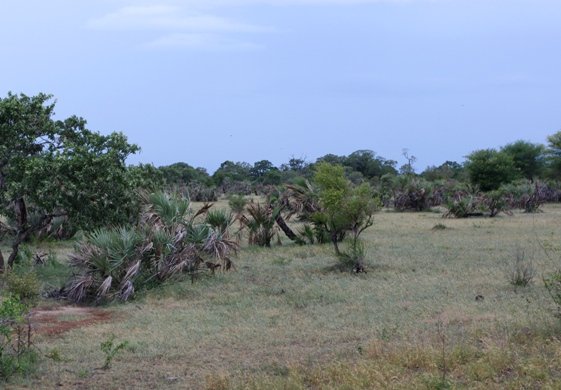Hyphaene coriacea, the lala palm yields palm wine

Author: Ivan Lätti
Photographer: Jack Lätti
Large stands of Hyphaene coriacea or lala palms are often seen in the Lowveld floodplains and swamps, those in picture inside the Kruger.
The tree’s close relative in the region, the mokola palm or H. petersiana, grows much taller and may have a single stem, its fruits more globose, not pear-shaped.
The lala palm is but one of the palm tree species that produce the well-known palm wine in their stems. Cuts are made near the stem tip above some leaves to initiate the flow of the sap via the concave upper surface of a leaf stalk base, bent down and cut off opportunely for collecting the harvested wine in a container.
After some time, the sap emerging from the stem hardens over the wound and more cutting is required, yielding up to 70 litres of wine per tree. The wine is sweet and has a low alcohol content of about 3,6%, but distilling is sometimes done, yielding one tenth of the wine volume in potent spirit. Many of the trees are killed by this practice.
The useful trees serve in other ways: Ornaments are carved from the hard, white seed kernels, referred to as vegetable ivory. The leaves are much harvested for weaving baskets (Coates Palgrave, 2002; Van Wyk and Gericke, 2000; Van Wyk and Gericke, 2000; Van Wyk and Van Wyk, 1997).

